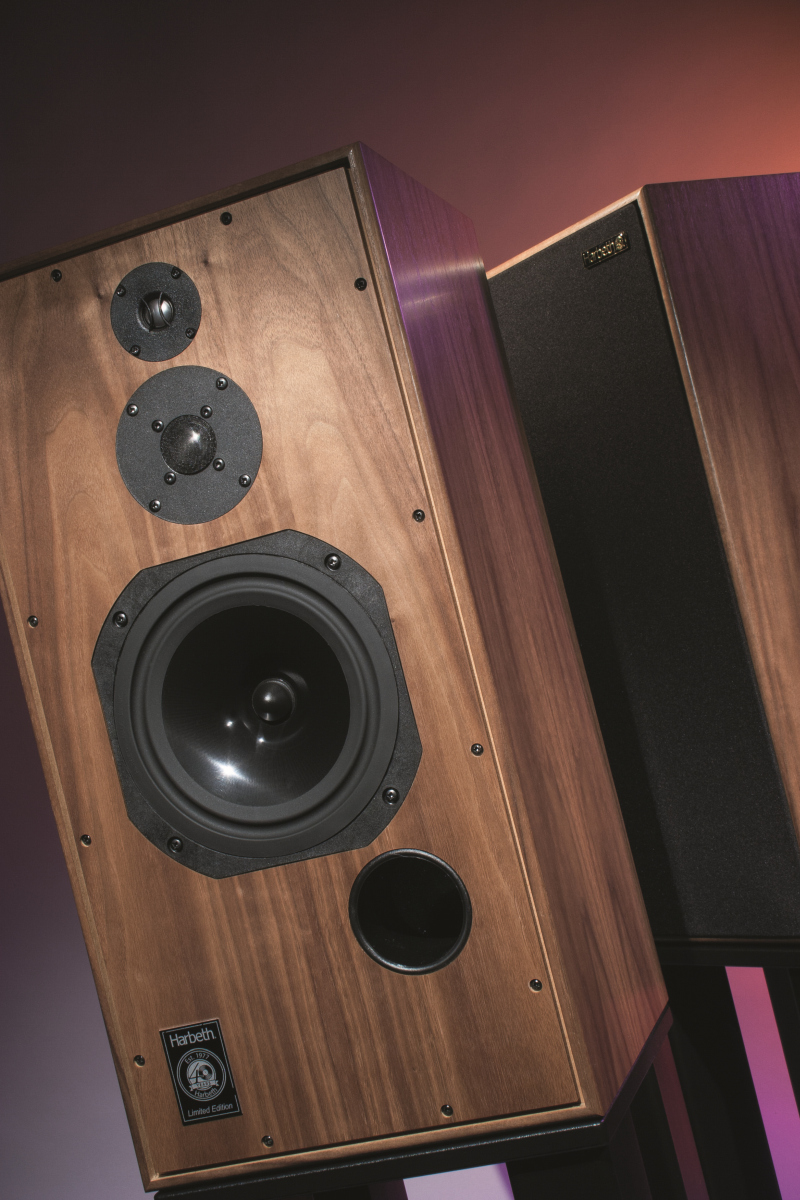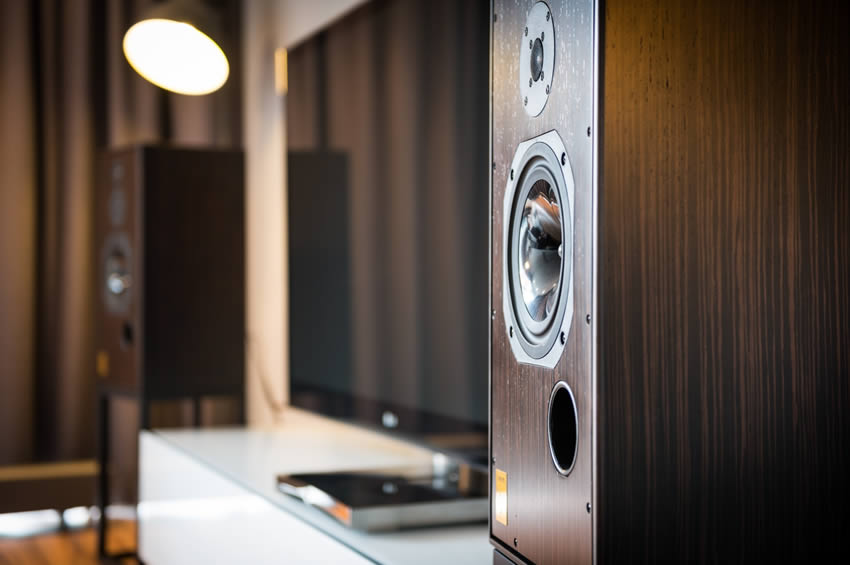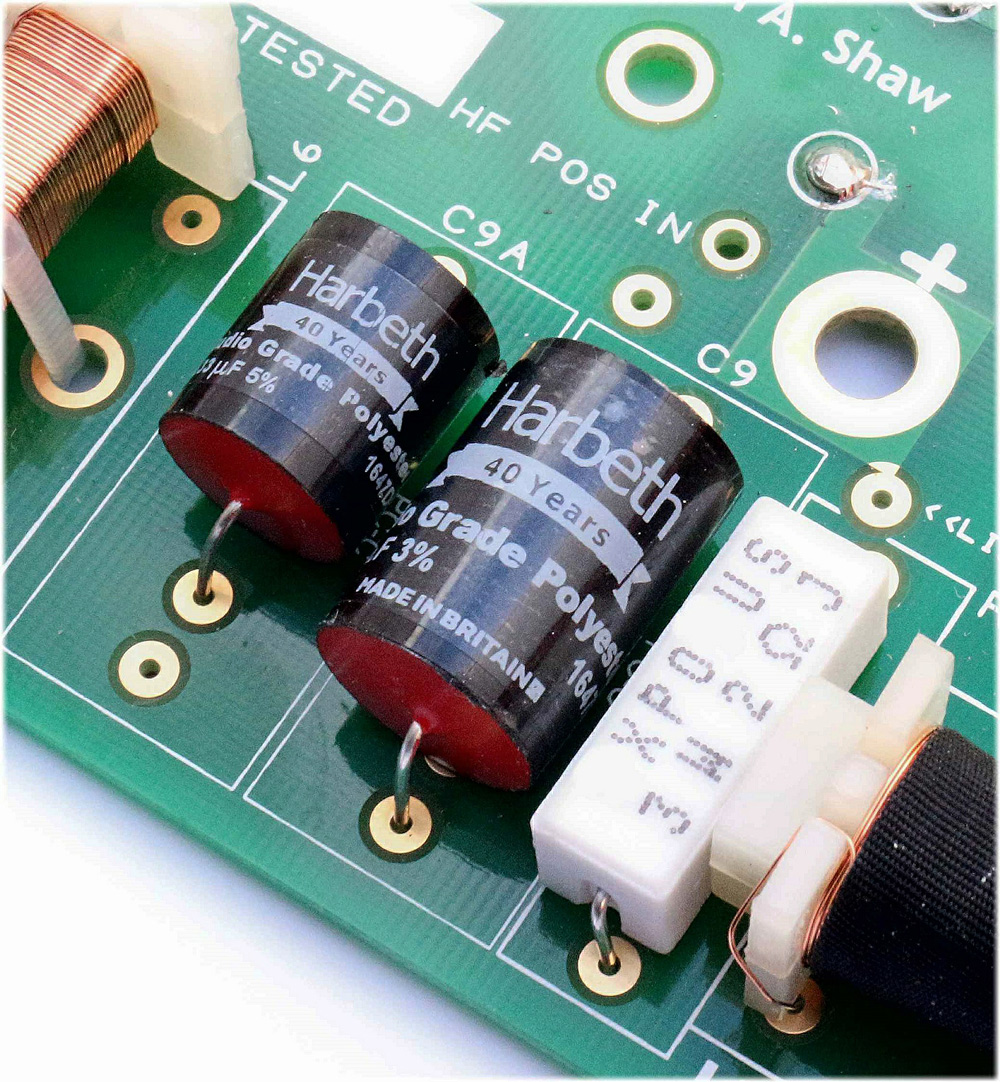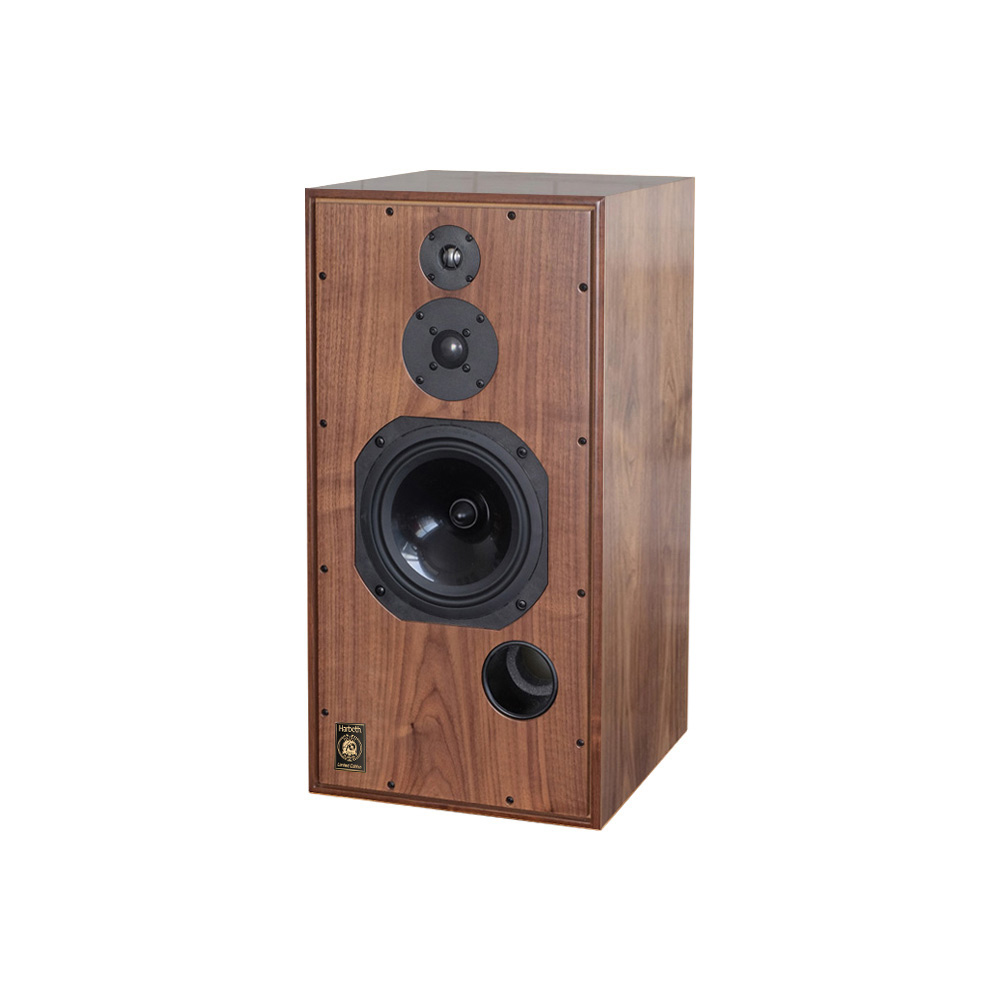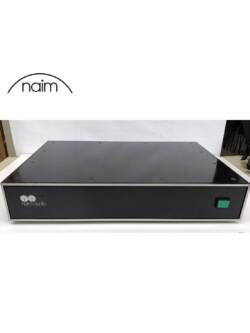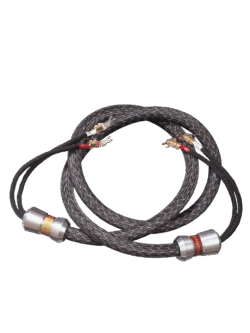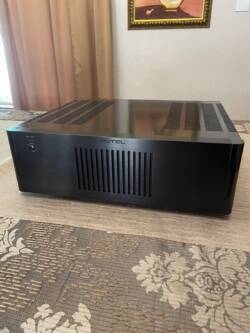Harbeth SHL5+ Stereo Speakers
Original price was: R148,000.00.R52,000.00Current price is: R52,000.00.
Another BARGAIN, this is a 5800BGP speaker and in PERFECT condition.
There’s this story that I know. It’s about the Earth and how it floats in space on the back of a turtle. I’ve heard this story many times, in many places. Each time, some small detail always seems to change, but in all of them, the Earth never leaves the turtle’s back and the turtle never swims away.
One time, I think it was in Munich, a young boy asked about the turtle and the earth. If the earth was on the back of the turtle, what was underneath the turtle? Another turtle, the storyteller told him. And below that turtle? Why, another turtle. And below that one? Yet another turtle.
The boy, obviously taking some delight in this turn of events, began to laugh. So how many turtles are there? The storyteller shrugged. No one knows for sure, he said, but it’s turtles all the way down.
“The truth about stories is that that’s all we are” wrote Thomas King, and this idea has become something of a touchpoint for me. Stories. We are all stories.
I have a story to tell about Harbeth (website). You may have heard this story before, or it may just sound familiar to you. It doesn’t really matter. I like to think that my story about Harbeth is a little different from other stories. Better still, I’m going to try and tell it in a way that’s a little different from the ways I’ve told other stories. But don’t worry. It’s still turtles all the way down.
I should start by saying that I think we all have expectations about things. We’re wired for it. The idea of “tabula rasa”, that we are all in some interesting and meaningful way a “blank slate”, either at birth or whenever it is that we finally embark on that new adventure, is simply not true. We’re never empty. I think this is, essentially, the point that followers of the Buddha have been attempting to make for a couple thousand years now. It’s worth reiterating, just generally, but whenever you approach something that doesn’t line up with expectations, or common wisdom, or a heretofore unexamined ideal that we’ve been parading about with. We’re never empty. And we’re quite often wrong. It happens. No big deal.
Harbeth makes loudspeakers. I’m pretty sure that this isn’t a surprise. If you’re reading this, I expect you have some level of familiarity with “the hobby” that is high-end audio in this odd corner of the consumer/luxury goods market. And given that, you probably already know about Harbeth.
Here are some other things you probably know. Or think you do. It’s fine, either way. No judgment here. But I’d wager dollars to donuts that when you think of Harbeth, you think of the following:
- Boxy
- British
- Dated
Maybe not in that order. Maybe you have other thoughts or variations on these three themes. That’s okay. That’s not the point. The point is that none of these — at least as I’ve laid them out — lend themselves to you as particularly indicative of amazing sound quality.
You might raise your hands at this point. Qualify your thoughts. “Boxy, yes — but good.” As if to Dudley Moore your way into softening some sort of blow. Or say something about how “that BBC sound” (aka, “chesty”) has “come a long way”. Or note, in passing, about how it’s still possible that “retro speakers” that don’t have inert cabinets, in order to minimize those “untoward colorations”, might actually sound good.
It’s okay. Don’t sweat it. It’s good to get these things out.
I’m not going to disabuse you. Okay, maybe I am. But this isn’t going to be an Apologetic on the design choices made by Alan Shaw and his team over at Harbeth. You have your biases. They have theirs. Remember the turtles?
What I am going to invite you to consider is that your story may only be half-told. And also that, even despite preconceptions, Harbeth is not only still making great sounding speakers, but that they’re making truly excellent sounding speakers — and that these newest may well be among the best-sounding speakers you can currently buy.
But don’t get all worked up. It’s an invitation. I still have my story to tell, after all. You can make whatever you want of it. But after you’ve heard this story, it’ll be yours. Do with it as you like. Just don’t say no one ever told you.
Detour through the BBC
My history of the BBC is not a true story. Truth takes effort and time and research, and I don’t want to pretend to what I’m not. There are whole worlds worth of histories in here. For those curious as to how far down the rabbit hole you can go, I recommend the trip. Start with Wikipedia for the LS3/5, for example, and hit the references. Or just start at Stereophile. The LS3/5 is a BBC archetype, often copied and almost as often, reviewed. All the cool kids have done it — seriously — so I cannot encourage the detour more strongly.
But I will lift out “the BBC sound”. Perhaps you’ve heard the phrase. There’s a reason, and one not terribly kind to the prehistory of this modern age of measurement and rigorous testing, but the thing to note is that measurement and rigorous testing, as a thing today, arguably is because of the BBC searching for its sound.
“Back in the day”, and here I’m waving my hands at the late 1940s, there really was no standard for accurate reproduction — those making loudspeakers weren’t so much an industry as a group of extremely enthusiastic hobbyists, each pursuing whatever it was they were pursuing, but while it was supposedly “the absolute sound”, that pursuit tended to head off-road almost immediately to set up base camp somewhere south of the Land of the Lost.
The BBC, despairing of this, made some demands of industry in order to find an “appropriate” method to reproduce their fine broadcasts. The LS3/5 (and all of its derivatives, cousins, and clones) eventually came out of those efforts. Companies like Linn, Spendor, Stirling, KEF and Rogers all owe some level of success to a common “BBC standards” heritage.
Harbeth (website) is cut from this cloth, too, and their brand is their story. Their tag line, “the world’s best-loved loudspeakers”, is practically an invitation to wax poetic about that time at the place with the guy when the thing happened. In fact, I can’t think of a single brand that inspires as much fondness. I suppose that’s what happens when your brand becomes synonymous with “better sound”.
One of the main engineers at the BBC, founder H.D. Harwood, hit upon a novel material he believed ideal for speaker cones: polypropylene. He got his patent after exiting the BBC, and Harbeth was born. While Harbeth did in fact create their own LS3/5 derivative, they did quite a bit more.
Harbeth and Love
My story, or rather, the part that I’m personally involved in, is boringly common. I knew a guy. His dad had some Harbeth speakers. When he grew up, he himself bought Harbeth speakers. I asked him if he plans to get Harbeth speakers for his daughter. To continue the lineage. Because of the turtles. He thinks that’s funny. But he did loan me his pair of little baby HL-P3. Figured they’d be perfect for desktop use. He was right. They are.
I was introduced to the larger Harbeth speakers while pretending to be an audio journalist. This is about where Vinnie Rossi and Fidelis AV come in. Between the two of them, I fell in love with the 30.1, fell again with the Harbeth Super HL5 Plus (here), and yet again with the 40.2. At this point, I suppose it’s fair to say that “I’m a Harbeth fan”, but I haven’t actually spent any considerable time with any particular current-spec Harbeth speaker. I was lacking.
I think Walter Swanbon of Fidelis must have taken a little pity on me and all those stars swimming around in my eyes. Which is how I ended up with some Harbeth Super HL5 Plus speakers to play with.
The Harbeth Super HL5 Plus
First things first — the Super HL5 Plus look like speakers. This is an unexpected peculiar kind of thing to say, perhaps, but in a world where loudspeakers may well end up shaped like space-penises, speakers that have a somewhat traditional look to them are kind of novel. Not that there’s anything wrong with space-penises. I’m sure they’re just dandy and quite capable of making excellent sound. But sometimes, it’s nice to actually not have to explain that the Little Shop of Horrors “plant” book-ending the far end of the room are actually devices for reproducing sound, and not the real-life basis for the Invasion of the Body Snatchers. It’s really best not to ask more than this.
I will freely admit that my taste tends to run in the direction of “retro”. Self-knowledge goes a long way, I’m told. And the Harbeth chic is right up my aesthetic alley. The speakers can come in a variety of finishes, but the current favorites (this, according to the importers) tend to the dramatic, like Tiger Ebony or Rosewood. My demo pair of Harbeth Super HL5 Plus were of the latter.
Another thing to note upfront — all of their speakers require stands. Every one of them. And no, Harbeth doesn’t actually furbish those. The racks that came along for demo came from HiFi Racks, though I know folks have had good luck with Skylan and Sound Anchors also. The HiFi Racks stands are wood and more or less match the aesthetic of the speakers. I think they’re excellent, and no, I didn’t use any Blutack (that stuff discolors most veneer — not recommended).
The Harbeth Super HL5 are not mirrored — they’re clones. Which means the port will always be off to the same side. You may not care, as all Harbeth speakers ship with gigantic grill covers that completely hide the fascia of the speakers. My recommendation is to ditch them, but your mileage may vary.
The Roseweood is moderately figured, a deep and lustrous reddish-brown. “Furniture-grade” is what comes to mind. Note too that pulling the grills off will mean exposing the casework, which means lots of visible screws. It’s part of the charm, but for those looking for a Williams Sonoma kind of look, this is more vintage than retro, but will be a standard thing across all the product lines.
Ports are on the front, so positioning is relatively straightforward — there’s a lot of flexibility to maneuver them into your space. I preferred to pull them rather forward, almost near-field (about 6′ from my head), but I experimented with them all over the room. I simply found that the intimacy of the near-to-near-field not only completely eliminated the room, it let the speakers knit some of the most intense layering I’ve yet had in my listening room.
The speakers are light-weight — a very welcome characteristic — especially when compared with some of the speakers I’ve had in.
There are three drivers. The mid/woofer, the tweeter and a super-tweeter. I suppose that makes the speaker a 3-way, but, not really. The vast majority of sonic information happened well away from the region handled but the super-tweeters, but I can’t say that they didn’t have any impact.
The specs have them listed as a 6Ω load, and they’re described as “easy to drive”. I took them at their word, and variously used the 60wpc INT60 amplifier from Pass Labs, a 20wpc tube amplifier from BorderPatrol, and a skunkworks GM70 amplifier. All of these amplifiers acquitted themselves magnificently. I’m sure that more power would not go amiss, but the point is, don’t get too put off by the 86dB sensitivity. Remember, you can pull these speakers radically closer than you’d expect (the joys of a studio monitor heritage, thank you BBC), so power can become far less of an issue than it might otherwise be.
Sound
“Writing about sound is like dancing about architecture.” — me.
I’ve always felt that there is something odd about most efforts to write about audio products. They make sound, after all, and capturing that in something other than sound is distancing. You end up either crafting a linguistic experience from whole cloth or end up a sculptor, gradually chipping away at this or that, leaving a pile of joy on the floor like shavings.
I want to compare these speakers to a reference. Something you would intuitively grasp. So when I told you these did this or that better or worse, you’d understand.
 In many reviews, I think this makes sense. A DAC is a converter. It makes sense to talk about it in terms of technical feats of prowess. Perhaps. But for speakers, I feel this is somewhat lessening.
In many reviews, I think this makes sense. A DAC is a converter. It makes sense to talk about it in terms of technical feats of prowess. Perhaps. But for speakers, I feel this is somewhat lessening.
Here’s the gestalt — the Harbeth Super HL5 Plus are magnificent-sounding loudspeakers. I am having a hard time thinking of another pair of speakers in anything near its price range that I’d rather recommend, much less, live with indefinitely. They will not plumb the depths of Hell, trolling for another Balrog of Morgoth. For that, you’ll need to go elsewhere. Perhaps to SVS for a subwoofer, for example. They will need power if your goal is to attempt to troll for Balrogs, however, so plan accordingly.
I found that ~40 watts of SET power (from that not-to-be mentioned again GM70 “project” that I truly hope sees the light of day) was exhilarating. For what constitutes my “everyday listening”, these speakers driven by the INT60 from Pass Labs was downright magical. And when I busted loose some Infected Mushroom, we got our asses shut down in record time. Big fun.
 Most of my listening is usually done elsewhere on the genre spectrum, however (family peace and harmony is a goal of mine), so I tend to land more on jazz and small-arrangement classical. I have a DAC and transport here from Aqua HiFi, so I was exploring a bunch of Rudy Van Gelder remaster CDs, including some old Miles Davis. The clarity of these speakers was unexpected. Fed quality material, through quality electronics, and I mistook these speakers for my pair of E-Stat Solutions Quad ESL-63 — and that is an excellent thing. 3-D holography, Miles as a person and not just as a sound, all part of the mesmerizingly detailed sound stage these slightly-toed-in loudspeakers were able to carve out of the air.
Most of my listening is usually done elsewhere on the genre spectrum, however (family peace and harmony is a goal of mine), so I tend to land more on jazz and small-arrangement classical. I have a DAC and transport here from Aqua HiFi, so I was exploring a bunch of Rudy Van Gelder remaster CDs, including some old Miles Davis. The clarity of these speakers was unexpected. Fed quality material, through quality electronics, and I mistook these speakers for my pair of E-Stat Solutions Quad ESL-63 — and that is an excellent thing. 3-D holography, Miles as a person and not just as a sound, all part of the mesmerizingly detailed sound stage these slightly-toed-in loudspeakers were able to carve out of the air.
My favorite moment came somewhat late during my time with the Harbeth Super HL5 Plus. Instead of piano concertos, I was listening to the Reference Recordings version of Copland’s Fanfare, with Eiji Oue conducting the Minnesota Orchestra. There’s a moment, early on, when someone rings a what must be a gong. It’s big, it’s shimmering, and when you’ve got the volume level just a hair past ill-advised, it’s shattering. I was playing this piece, over and over again, listening to how the brass sounds. I was also switching DACs between plays. A nuance I’d never heard before — something about the sheer brassy brassiness of that single transcendent moment varies, depending on the converter I was using. I have that album on LP, too, and that too, sounds different. In fact, I recommend exploring that piece — because it’s awesome — but because if your system can’t get the transients and the decay just so, it’s completely unremarkable. You’ll miss it. And be forgiven for it. But the point here is that whatever else was in the chain, it was the Harbeth speakers reproducing it and picking up on the sometimes subtle, sometimes not-so-subtle, variations happening all the way up the chain. And that single, soul-shivering moment when the gear and the music unlocked — that was with this pair of Harbeths at the end of the chain. Skadoosh. More on that story another time.
Conclusions
There’s this story that I know. It’s about the Earth and how it floats in space on the back of a turtle. I’ve heard this story many times, and in many places. Each time, there’s some small detail that gets changed, but in all of them, the Earth never leaves the turtle’s back and the turtle never swims away.
One time, I think it was in Denver, a young girl asked about the turtle and the earth. If the earth was on the back of the turtle, what was underneath the turtle? Another turtle, the storyteller told him. And below that turtle? Why, another turtle. And below that one? Yes, another turtle.
The girl, obviously tickled at this turn of events, giggled. She asked, “So how many turtles are there?” The storyteller t0ld her, “No one knows for sure, he said, but it’s turtles all the way down.”
 The truth about stories is that that’s all we are. We play here with words, with light and sound, and in the end, we share ourselves through the shape of the space we create with them.
The truth about stories is that that’s all we are. We play here with words, with light and sound, and in the end, we share ourselves through the shape of the space we create with them.
I’ve tried to share with you, here, a story about Harbeth. About how much joy I took from their visit, even as I got sidetracked into details and minutiae. But no set of scintillas will convey the years I spent listening to music in those too-few months I had with the Harbeth Super HL5 Plus loudspeakers. The only reason I’m letting them go is that their big brothers will soon take their place.
My listening room is modestly sized (14′ across and under 8′ high), so enormous full-range loudspeakers just don’t really fit. Believe me, I’ve tried. But I’ve found that it’s far better to find speakers — and a system that makes them sing — that do enough and do that really well. And what Harbeth does really well is sing the soul of the music. As they stayed, and stretched, and broke themselves in and relaxed, so did I. The fact that my system was fronted by Harbeth speakers on the day I said goodbye to a 21-year career in IT security was only a coincidence, I’m sure, but looking deeper, maybe not.
The Super HL5+ are not perfect, and I should note that it gives me small pains to type that out. I imagine that some will find fault with their decided and deliberately retro styling. For myself, I wish they were more sensitive. I wish they played deeper. I wish the Lotto Fairy would call me back, that more voters bothered to turn out in every election, that my allotted span was far longer than it currently seems to be.
“The perfect is the enemy of the good.” I like this saying. It reminds me to enjoy what I have. While I have it. And I mightily enjoyed these speakers. This is why they’re getting an Editor’s Choice Award.
The Harbeth Super HL5 Plus were perfect for almost every style and genre of music I listened to, or cared to listen to. The immediacy and intimacy were pure electrostat. The size and impact were clearly dynamic. Very few speakers do both of them well. Just add appropriate levels of power, and you’re all done. Better still, they’ll grow with you — the more you improve the gear feeding them, the more you’ll hear out of them. A gift that keeps on giving. As it was to your parents, so will a pair of Super HL5+ be to you — and to your kids.
It’s turtles, you see. All the way down.
So. That’s my story. I’m sure there are still many things I can and should say, but perhaps it’s just best to leave it here for now. You can make whatever you want of my story. But whatever you do, you’ve heard it. It’s yours. Do with it as you like. Hopefully, you’ll go out and find a way to have your own Harbeth story. Maybe. I hope so.
Just don’t say no one ever told you.
Description
Harbeth Super HL5 Plus Specifications
- Drivers: 3-way vented: 200mm Harbeth RADIAL2™ bass/mid; 25mm ferro-cooled dome tweeter, 20mm dome SuperTweeter
- Frequency response: 40Hz – 20kHz ±3dB free-space, grille on, smooth off-axis response
- Impedance: 6 ohms, easy to drive
- Sensitivity: 86dB/1W/1m
- Amplifier suggestion: suggested from 25W/channel.
- Power handling: 150W
- Connectors: Four 4mm gold-plated binding posts for wires or plugs (biwireable)
- Dimensions: 635 x 322 x 300mm (+12mm for grille and binding posts)
- Finish: Cherry, tiger ebony, eucalyptus, rosewood.
- Space needs: Overall response optimized for use away from walls.
- Stands: Optimally to bring ears level with tweeters: typically 16-20 inches. (Tweeter: 475mm up from cabinet base)
- Weight: 15.8kg each, unpacked
- Price: $6,890/pair (stands not included)

